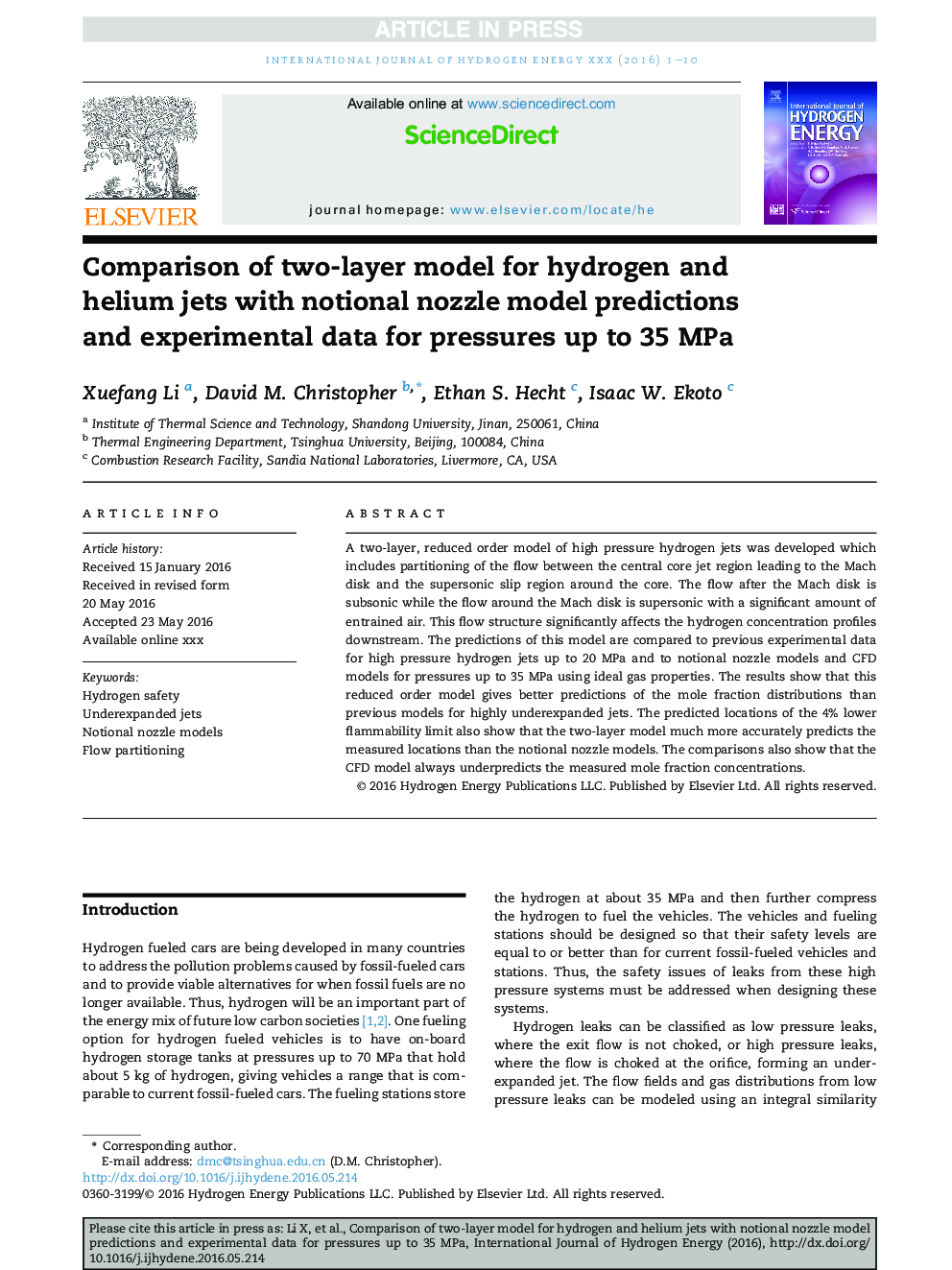| Article ID | Journal | Published Year | Pages | File Type |
|---|---|---|---|---|
| 5145358 | International Journal of Hydrogen Energy | 2017 | 10 Pages |
Abstract
A two-layer, reduced order model of high pressure hydrogen jets was developed which includes partitioning of the flow between the central core jet region leading to the Mach disk and the supersonic slip region around the core. The flow after the Mach disk is subsonic while the flow around the Mach disk is supersonic with a significant amount of entrained air. This flow structure significantly affects the hydrogen concentration profiles downstream. The predictions of this model are compared to previous experimental data for high pressure hydrogen jets up to 20Â MPa and to notional nozzle models and CFD models for pressures up to 35Â MPa using ideal gas properties. The results show that this reduced order model gives better predictions of the mole fraction distributions than previous models for highly underexpanded jets. The predicted locations of the 4% lower flammability limit also show that the two-layer model much more accurately predicts the measured locations than the notional nozzle models. The comparisons also show that the CFD model always underpredicts the measured mole fraction concentrations.
Related Topics
Physical Sciences and Engineering
Chemistry
Electrochemistry
Authors
Xuefang Li, David M. Christopher, Ethan S. Hecht, Isaac W. Ekoto,
